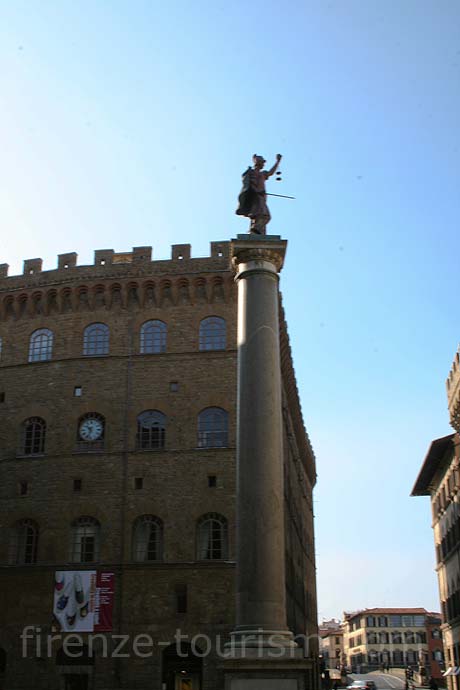Piazza Santa Trinita

Just like most of its counterparts, Piazza Santa Trinita is named after the religious edifice overtopping it, namely, the Church of Santa Trinita, the worth and history of which have been well documented and ascertained. Yet, this church is not the only landmark to absorb the tourist relevance of Piazza Santa Trinita. On the contrary, the piazza itself, by its combination of lay-out (it stands out as one of the few triangular squares in Florence) and amount of architectural styles materialised in the palaces located here exceeds, by far, the notoriety of the church. Thus, the Ferragamo Museum is known for being hosted by the Palazzo Spini which originally was a substantiation of the medieval architecture in Florence, and connoisseurs are even at present able to tell the underlying style covered in time by multiple attempt of restoration approached from the perspective of other architectural trends.

Other two valuable palazzos are Palazzo Bartollini and Palazzo Buondelmonti, with an obvious Renaissance dash, though Mannerist elements can be spotted on various landmarks of the piazza. Furthermore, one can not simply pass though Piazza Santa Trinita without noticing the Column of Justice, the story of which is more than relevant for the history of the relations between the Medici family and papacy, on the one hand, and of those between the famous Florentine family and the branch of the artists, on the other hand. Besides such considerations, Piazza Santa Trinita is also a landmark along the famed Via Tornabuoni, a genuine backbone of the capital of Tuscany in terms of glamorous shopping and leisure opportunities, and it gives its name to the nearby bridge over the Arno River, that is, Ponte Santa Trinita, originally built during the latter half of the 16th century and reconstructed subsequently to World War Two, as a result of the heavy bombing.